 For several years, the Best Car Audio team has provided articles on the features, functions and benefits of all manner of car audio products and services. Well into our third year, it’s time to go back to the basics and talk about the fundamental theories of electricity and how they relate to our car audio systems. Grab something to drink, get comfortable and enjoy: It’s time to get our learn on about the basics and Ohm’s Law!
For several years, the Best Car Audio team has provided articles on the features, functions and benefits of all manner of car audio products and services. Well into our third year, it’s time to go back to the basics and talk about the fundamental theories of electricity and how they relate to our car audio systems. Grab something to drink, get comfortable and enjoy: It’s time to get our learn on about the basics and Ohm’s Law!
What is Electricity?
 In its most basic of terms, electricity is a group of charged electrons that can be used to do work. The electricity in our cars comes from two sources: the battery and the alternator. After the battery is used to start the car, the alternator recharges the battery and provides electricity to run the fans, lights, electronic circuits and computers that keep our cars running.
In its most basic of terms, electricity is a group of charged electrons that can be used to do work. The electricity in our cars comes from two sources: the battery and the alternator. After the battery is used to start the car, the alternator recharges the battery and provides electricity to run the fans, lights, electronic circuits and computers that keep our cars running.
Terminology: Voltage
To understand electricity, you need to understand a few terms. The first we will talk about is voltage. Voltage is a unit of measurement that quantifies the difference in electrical potential between two points. The SI unit of measure is volts and is represented with a capital V.
Once again, in relation to our vehicles, we have a 12V electrical system. More specifically, a fully charged car battery will rest at 12.6 volts for a conventional lead-acid design. Some AGM batteries will rest at 13.0 to 13.2 volts.
You can look at a voltage as electrical pressure. Imagine a water tank sitting on a table. If you connect a hose to the bottom of the tank, gravity will push the water out of the house. If you get a bigger tank, there is more pressure pushing the water out of the hose. So, more voltage is akin to more pressure.
Terminology: Current
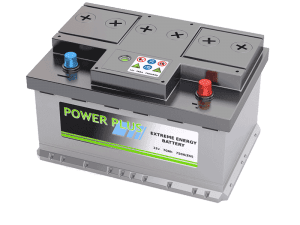 It’s important to know the quantity of electricity moving through a circuit. We use the SI unit ampere to quantify the volume of electrons moving in a conductor. The original definition for the ampere involved quantification of the magnetic force created between two infinitely long parallel conductors (wires). While this is a valid definition, it’s never used in schools or any training. A simpler explanation is that 1 amp of current is equivalent to 6.2415093 × 10^18 elementary charges moving through a boundary over a period of one second. An elementary charge is the is the electric charge carried by a single proton.
It’s important to know the quantity of electricity moving through a circuit. We use the SI unit ampere to quantify the volume of electrons moving in a conductor. The original definition for the ampere involved quantification of the magnetic force created between two infinitely long parallel conductors (wires). While this is a valid definition, it’s never used in schools or any training. A simpler explanation is that 1 amp of current is equivalent to 6.2415093 × 10^18 elementary charges moving through a boundary over a period of one second. An elementary charge is the is the electric charge carried by a single proton.
Using our water analogy, the current flowing in an electrical circuit is similar to the amount of water flowing in a pipe or hose. The amount of water flowing in that hose would be measured in gallons or liters per minute. A higher number means there is more pressure pushing on the water. So, back to our electrical terminology, when more voltage is present, more current flows through our circuit.
Choosing a specific example in an automotive example is tricky because vehicles differ dramatically in their electrical needs. With that said, most new cars and trucks have an alternator that can provide between 65 and 120 amps of current to power different devices. Batteries also vary a great deal as do the ratings available to quantify the amount of current they will provide. Most batteries have a capacity of 60 to 80 amp-hours. This rating descibes a battery’s ability to supply 1 amp of current for 60 to 80 hours before being considered depleted. Sadly, the equation cannot be reversed. A battery can’t supply 60 to 80 amps of current for an hour due to limits in the chemical conversation process.
Terminology: Resistance
 Resistance is the description of the opposition to the flow of current in a circuit. We use the SI unit ohm to quantify this value. Unlike voltage and current, the symbol used to represent resistance is the uppercase Greek letter omega: Ω. More resistance in a circuit reduces the ability for electrons to flow and thereby decreases the number of amps flowing.
Resistance is the description of the opposition to the flow of current in a circuit. We use the SI unit ohm to quantify this value. Unlike voltage and current, the symbol used to represent resistance is the uppercase Greek letter omega: Ω. More resistance in a circuit reduces the ability for electrons to flow and thereby decreases the number of amps flowing.
In our water and barrel example, pinching the hose would increase resistance and reduce the amount of water that flows. In an electrical system, the size of the conductors we use to wire circuits and the design of the circuits themselves determine how much resistance is present.
Terminology: Ohm’s Law
 Thankfully, in simple circuits, the relationship between voltage, current and resistance is linear. When we have more voltage available, more current flows for a given resistance. Likewise, less resistance in a circuit causes more current to flow for a given voltage. Ohm’s law is a simple mathematical equation that allows you to calculate any of the three values, provided you know two others.
Thankfully, in simple circuits, the relationship between voltage, current and resistance is linear. When we have more voltage available, more current flows for a given resistance. Likewise, less resistance in a circuit causes more current to flow for a given voltage. Ohm’s law is a simple mathematical equation that allows you to calculate any of the three values, provided you know two others.
The three equations are:
Voltage = Current x Resistance Current = Voltage ÷ Resistance Resistance = Voltage ÷ Amperage
V = I x R I = V ÷ R R = V ÷ I
Understanding Ohm’s law is the most important factor in working with and understanding electrical circuits.
Ohm’s Law Examples
One of the most common expressions used in teaching people about Ohm’s law is as follows: In a circuit with one volt of potential and a resistance of one ohm, one amp of current will flow. Seeing the relationship between this statement, we can calculate that for a fixed resistance, two amps of current will flow if we increase the voltage to two volts. Said another way, as the voltage potential applied to a circuit increases, the current through the circuit will also increase, as long as the resistance remains constant.
That’s it for our first lesson on car audio electrical theory. In the next lesson, we’ll talk about how we can use electricity to do work and discuss the equations used to quantify this work as power.
This article is written and produced by the team at www.BestCarAudio.com. Reproduction or use of any kind is prohibited without the express written permission of 1sixty8 media.
 In any discussion about understanding
In any discussion about understanding 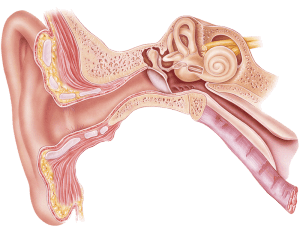 Sound is a vibration of air molecules that vibrates our eardrums. The eardrum passes these vibrations through to the middle ear through tiny bones called ossicles. The inner ear has a shape similar to that of a snail shell and contains microscopic hair cells that convert these vibrations into minute electrical signals. These signals are transmitted to the hearing nerve and subsequently to our brain. Each inner ear contains roughly 18,000 hair cells, all of which are said to fit on the head of a pin. Once a hair cell is damaged, it never grows back or repairs itself.
Sound is a vibration of air molecules that vibrates our eardrums. The eardrum passes these vibrations through to the middle ear through tiny bones called ossicles. The inner ear has a shape similar to that of a snail shell and contains microscopic hair cells that convert these vibrations into minute electrical signals. These signals are transmitted to the hearing nerve and subsequently to our brain. Each inner ear contains roughly 18,000 hair cells, all of which are said to fit on the head of a pin. Once a hair cell is damaged, it never grows back or repairs itself.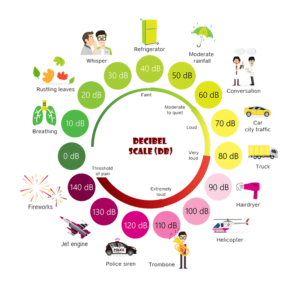 When discussing sound levels, the proper format is to use the unit dB SPL, dB(SPL) or dBSPL. The reference for any statement is the sound pressure as compared to 0dB. 0dB is defined as the perceived sound of a mosquito at a distance of 10 feet from the listener.
When discussing sound levels, the proper format is to use the unit dB SPL, dB(SPL) or dBSPL. The reference for any statement is the sound pressure as compared to 0dB. 0dB is defined as the perceived sound of a mosquito at a distance of 10 feet from the listener.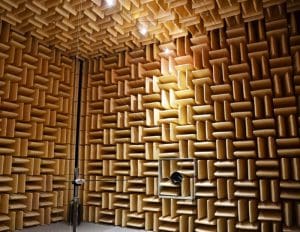 According to Guinness World Records, the quietest place in the world in 2012 was an anechoic test chamber at Orfield Laboratories in Minneapolis. The sound level in this room was measured at -13dBA. In October 2015, a team of engineers at the Microsoft head office in Redmond, Washington, smashed this record with measurements taken in the anechoic chamber in Building 87. A team of independent specialists measured a noise level of -20.35 dBA. The room is not only completely isolated from all sources of noise and vibration, but the walls are lined with large acoustic foam wedges design to absorb sound.
According to Guinness World Records, the quietest place in the world in 2012 was an anechoic test chamber at Orfield Laboratories in Minneapolis. The sound level in this room was measured at -13dBA. In October 2015, a team of engineers at the Microsoft head office in Redmond, Washington, smashed this record with measurements taken in the anechoic chamber in Building 87. A team of independent specialists measured a noise level of -20.35 dBA. The room is not only completely isolated from all sources of noise and vibration, but the walls are lined with large acoustic foam wedges design to absorb sound.
 Many statements about sound levels get thrown around the industry. Let’s talk about and clarify a couple of the most common.
Many statements about sound levels get thrown around the industry. Let’s talk about and clarify a couple of the most common. Just for fun and education, below is a series of test tones to demonstrate our ability to detect differences in amplitude. These tests are created to make the differences as easily perceivable as possible.
Just for fun and education, below is a series of test tones to demonstrate our ability to detect differences in amplitude. These tests are created to make the differences as easily perceivable as possible. There is nothing worse than turning up your
There is nothing worse than turning up your 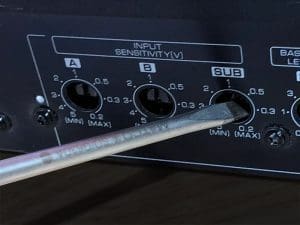 When a mobile electronics specialist installs an amplifier in your vehicle, the
When a mobile electronics specialist installs an amplifier in your vehicle, the 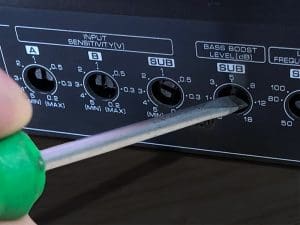 Perhaps the most dangerous control on an
Perhaps the most dangerous control on an 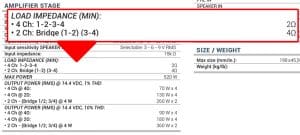 If you have multiple
If you have multiple 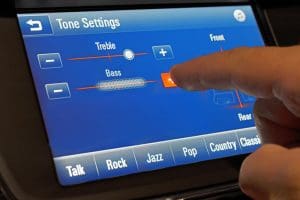 If your radio has an equalizer or simple bass and treble controls, turning them up will make different frequencies of your music louder relative to others. With that said, it won’t make a properly configured and tuned audio system play any louder. Just like the bass boost on an amp, equalizers and tone controls affect the signal level at specific frequencies.
If your radio has an equalizer or simple bass and treble controls, turning them up will make different frequencies of your music louder relative to others. With that said, it won’t make a properly configured and tuned audio system play any louder. Just like the bass boost on an amp, equalizers and tone controls affect the signal level at specific frequencies.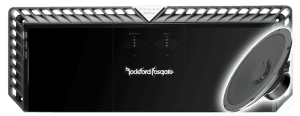 All speakers and subwoofers have power ratings. In almost all cases, this rating is the amount of power that the speaker can manage from a thermal standpoint. You see, speakers are notoriously inefficient. More than 95 percent of the energy fed into a speaker is converted to heat. If you feed a woofer 100 watts of power, 95 watts go into heating the voice coil and motor assembly and less than 5 watts are converted into acoustic energy.
All speakers and subwoofers have power ratings. In almost all cases, this rating is the amount of power that the speaker can manage from a thermal standpoint. You see, speakers are notoriously inefficient. More than 95 percent of the energy fed into a speaker is converted to heat. If you feed a woofer 100 watts of power, 95 watts go into heating the voice coil and motor assembly and less than 5 watts are converted into acoustic energy.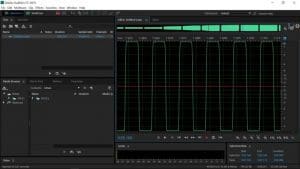 Another consideration about amplifiers is that most can produce 150 percent to 200 percent of their rated power as extra energy when pushed into clipping or distortion. So, a 50-watt amplifier can easily produce 75 watts of distorted power and still damage that 70-watt speaker.
Another consideration about amplifiers is that most can produce 150 percent to 200 percent of their rated power as extra energy when pushed into clipping or distortion. So, a 50-watt amplifier can easily produce 75 watts of distorted power and still damage that 70-watt speaker.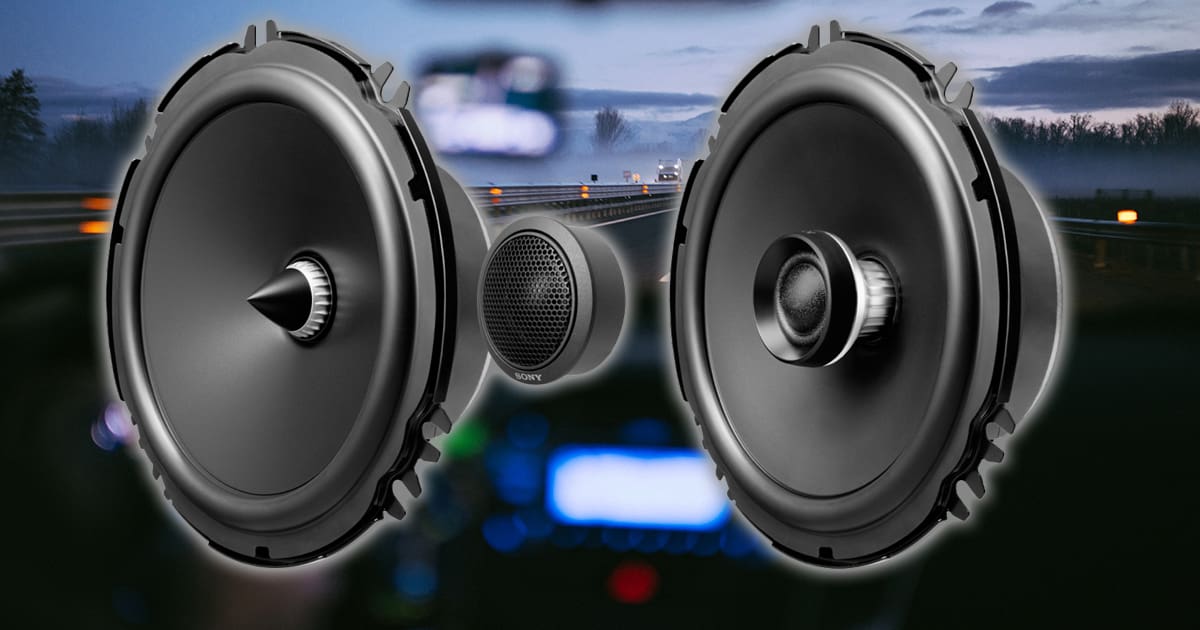
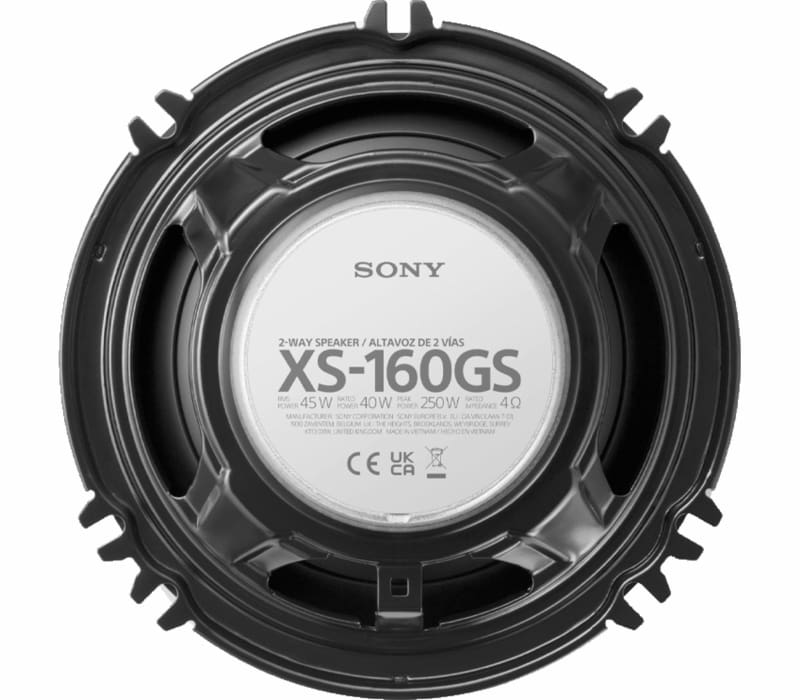
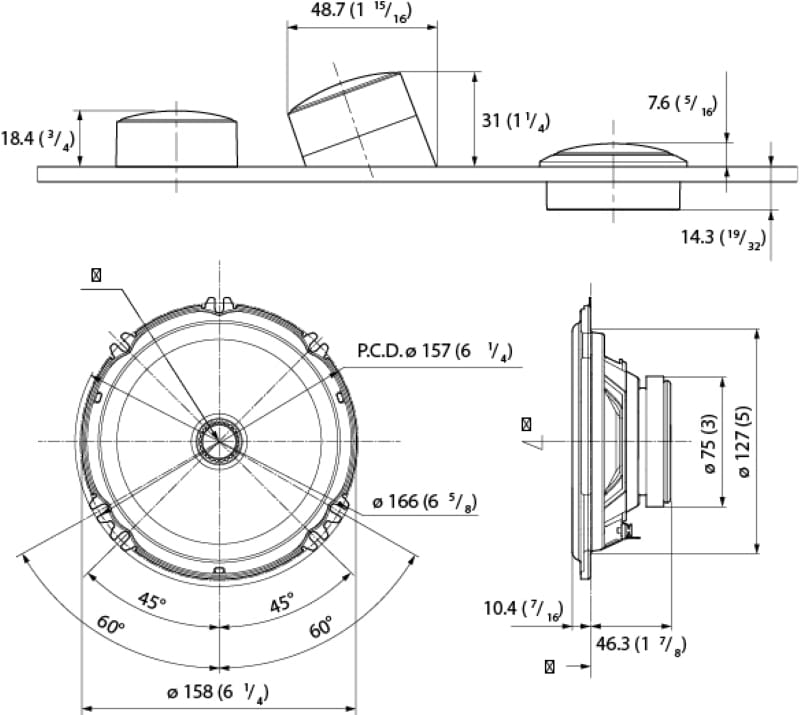
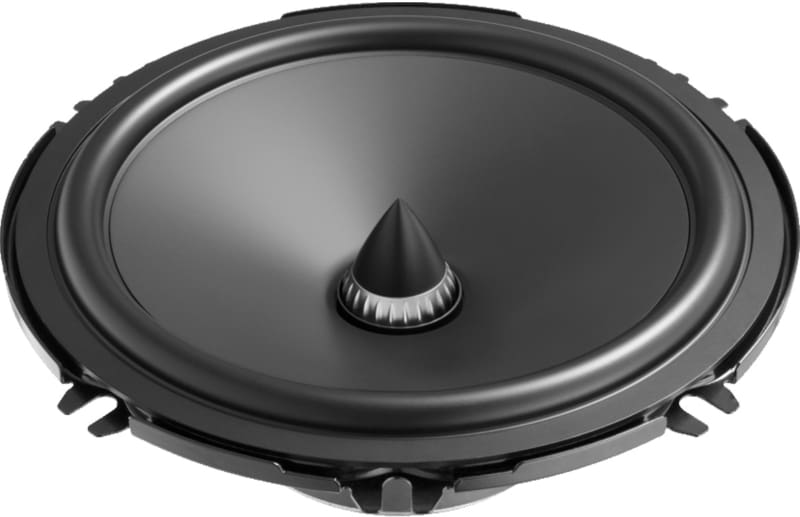
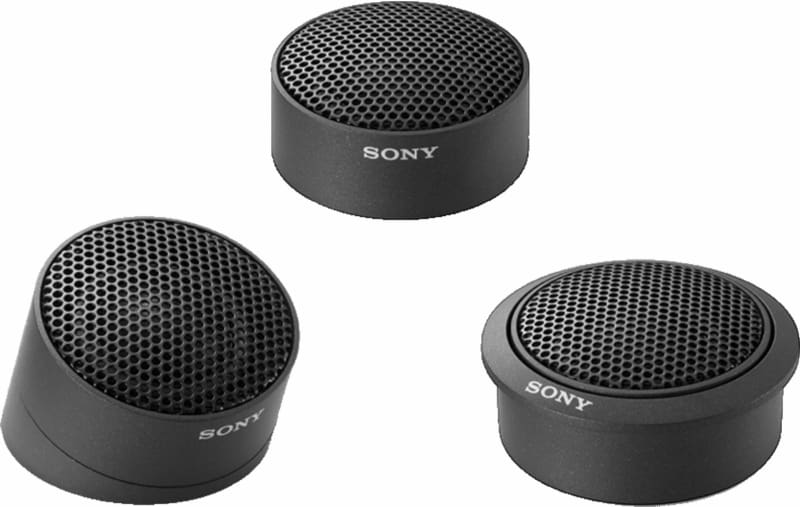
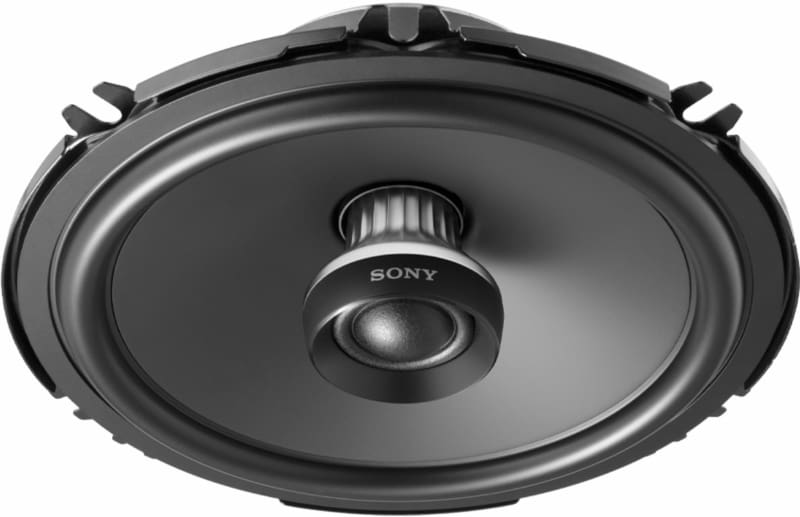
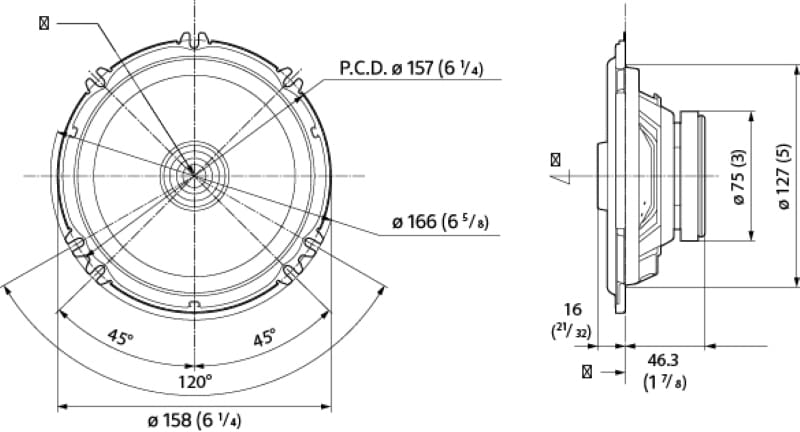
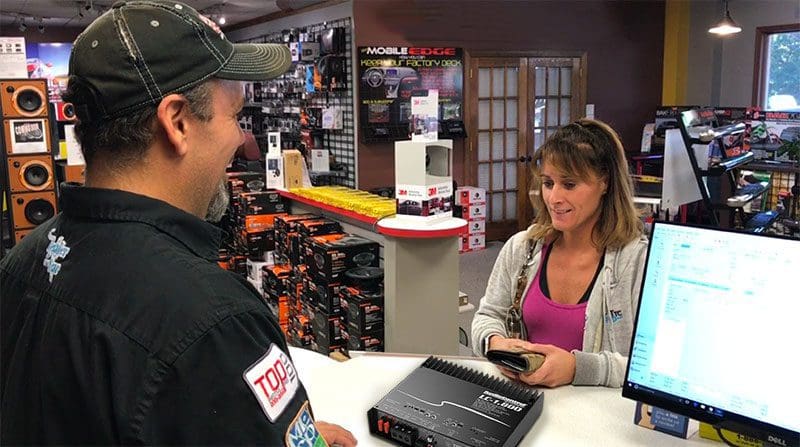 Shopping for car audio upgrades is as personal as shopping for a new car or new shoes. Each of us likes something different, has a different budget and different performance and style preferences. In the case of a new car, your options range from a solid and reliable daily driver in the $14,000 range to luxury and exotic vehicles costing well over $100,000. When it comes to a new radio, speakers, an amplifier or a subwoofer upgrade for your car, the price point differs just as much, as do the features and performance levels. In this article, we will provide some tips to prepare yourself to buy new car audio upgrades and ensure they are installed and configured reliably.
Shopping for car audio upgrades is as personal as shopping for a new car or new shoes. Each of us likes something different, has a different budget and different performance and style preferences. In the case of a new car, your options range from a solid and reliable daily driver in the $14,000 range to luxury and exotic vehicles costing well over $100,000. When it comes to a new radio, speakers, an amplifier or a subwoofer upgrade for your car, the price point differs just as much, as do the features and performance levels. In this article, we will provide some tips to prepare yourself to buy new car audio upgrades and ensure they are installed and configured reliably. A discussion about online shopping opens a monumental can of worms. One of the biggest differences between buying from an online retailer and a local independent specialist will be the level of after-sales service and support. If you buy new speakers online and you have a problem with them, you can try contacting the supplier. About all they can do is offer to let you send the speakers back (at your cost) and they will send you another set. When you deal with a local retailer, someone can go to your car and listen to the problem. The issue may not be the speakers at all. It could be the
A discussion about online shopping opens a monumental can of worms. One of the biggest differences between buying from an online retailer and a local independent specialist will be the level of after-sales service and support. If you buy new speakers online and you have a problem with them, you can try contacting the supplier. About all they can do is offer to let you send the speakers back (at your cost) and they will send you another set. When you deal with a local retailer, someone can go to your car and listen to the problem. The issue may not be the speakers at all. It could be the 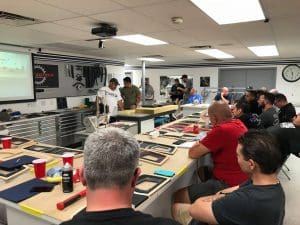 Make no doubt, most of the installers, technicians and fabricators who work at mobile electronics retailers got their start working on their vehicles in their driveway. In some cases, this passion for working on cars and trucks grew to include their friends’ vehicles, while others sought out training from companies like
Make no doubt, most of the installers, technicians and fabricators who work at mobile electronics retailers got their start working on their vehicles in their driveway. In some cases, this passion for working on cars and trucks grew to include their friends’ vehicles, while others sought out training from companies like 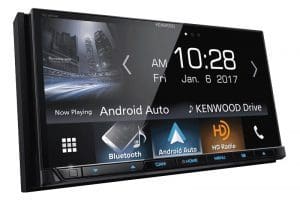 When it comes to source unit upgrades, the first thing you need to find out is whether or not you can replace the factory radio in the vehicle at all. Vehicles such as BMW, Mercedes-Benz, Mazda and many new Nissan vehicles have source units that can’t be removed.
When it comes to source unit upgrades, the first thing you need to find out is whether or not you can replace the factory radio in the vehicle at all. Vehicles such as BMW, Mercedes-Benz, Mazda and many new Nissan vehicles have source units that can’t be removed.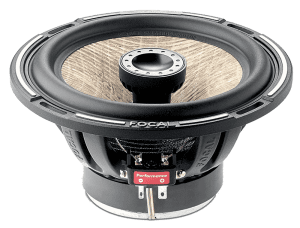 Perhaps the most important component in an audio system is the speakers.
Perhaps the most important component in an audio system is the speakers. 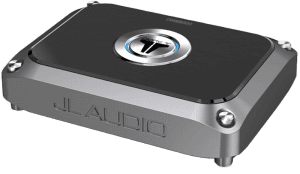
 When you go shopping, bring one or two pieces of music that you know well. Before you leave your house, listen to that song on as many different sources as possible: your home theatre system, a portable Bluetooth speaker, headphones with your smartphone and your existing stereo. Think about what is different between each experience so you can listen for those elements as you audition new products.
When you go shopping, bring one or two pieces of music that you know well. Before you leave your house, listen to that song on as many different sources as possible: your home theatre system, a portable Bluetooth speaker, headphones with your smartphone and your existing stereo. Think about what is different between each experience so you can listen for those elements as you audition new products.